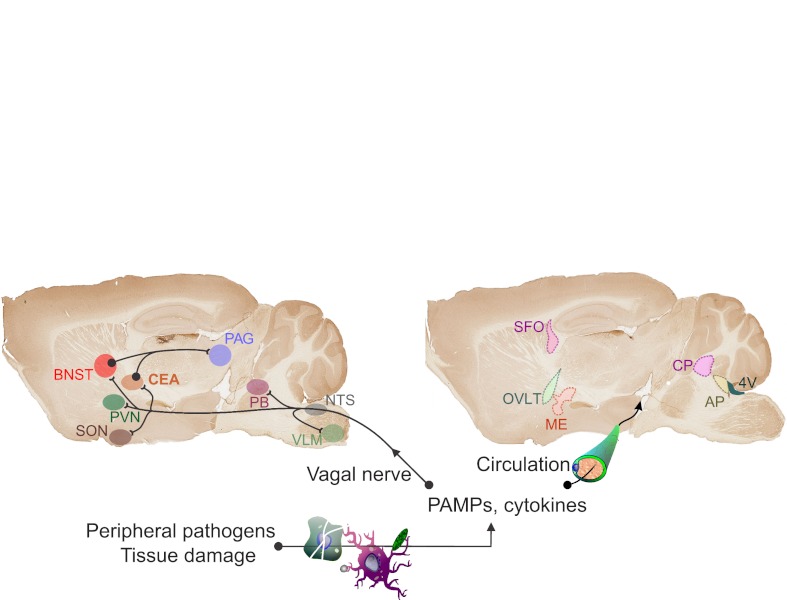Fig. 4.
Neural and humoral activation of the brain by the periphery. Peripheral infections alter behavior by communicating with the brain via neural and humoral pathways. The neural pathway occurs via afferent nerves. As an example, the vagal nerve has a proven role in mediating infection-induced behavior. The afferent vagus projects to the nucleus tractus solitaries (NTS) → parabrachial nucleus (PB) → ventrolateral medulla (VLM) before proceeding to the paraventricular nucleus of the hypothalamus (PVN), supraoptic nucleus of the hypothalamus (SON), central amygdala (CEA) and bed nucleus of the stria terminalis (BNST). The CEA and BNST, which are part of the extended amygdala, then project to the periaqueductal gray (PAG). By these pathways, activation of the vagus by abdominal or visceral infections influences activity of several brain regions implicated in motivation and mood. The humoral pathway involves delivery of PAMPs or cytokines from the peripheral site of infection directly to the brain. Active transport into the brain across the blood–brain barrier (BBB), volume diffusion into the brain or direct contact with brain parenchymal cells at the choroid plexus (CP) and circumventricular organs [median eminence (ME), organum vasculosum of the laminae terminalis (OVLT, i.e. supraoptic crest), area postrema (AP) and suprafornical organ (SFO)] that lie outside the BBB all transpose the peripheral signal into a central neuroinflammatory response that mirrors the response at the periphery (Dantzer et al., 2008).

